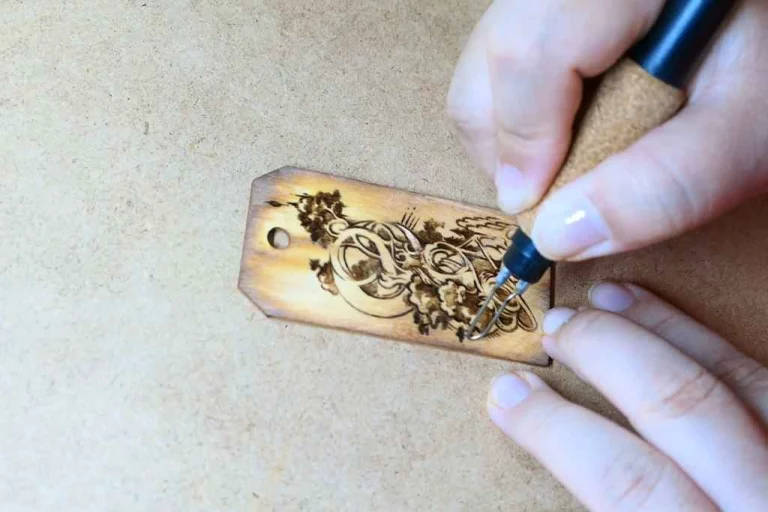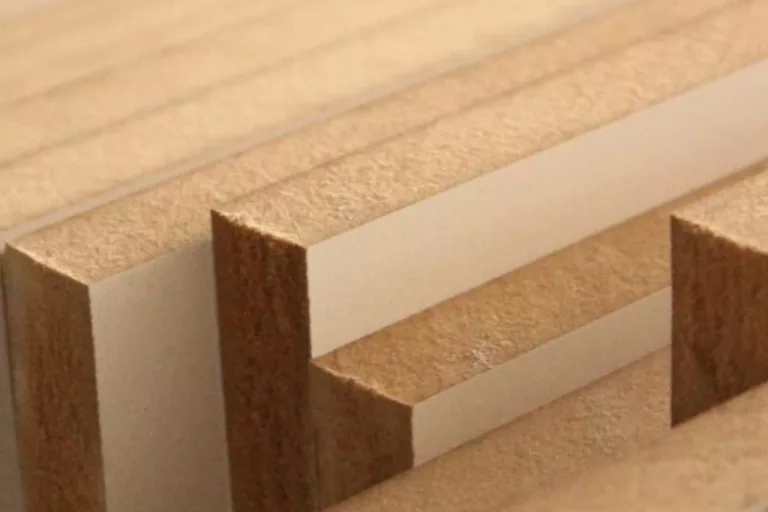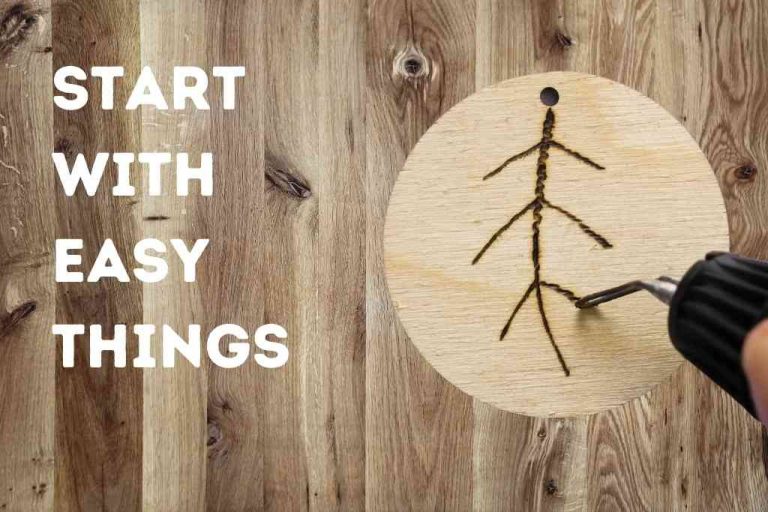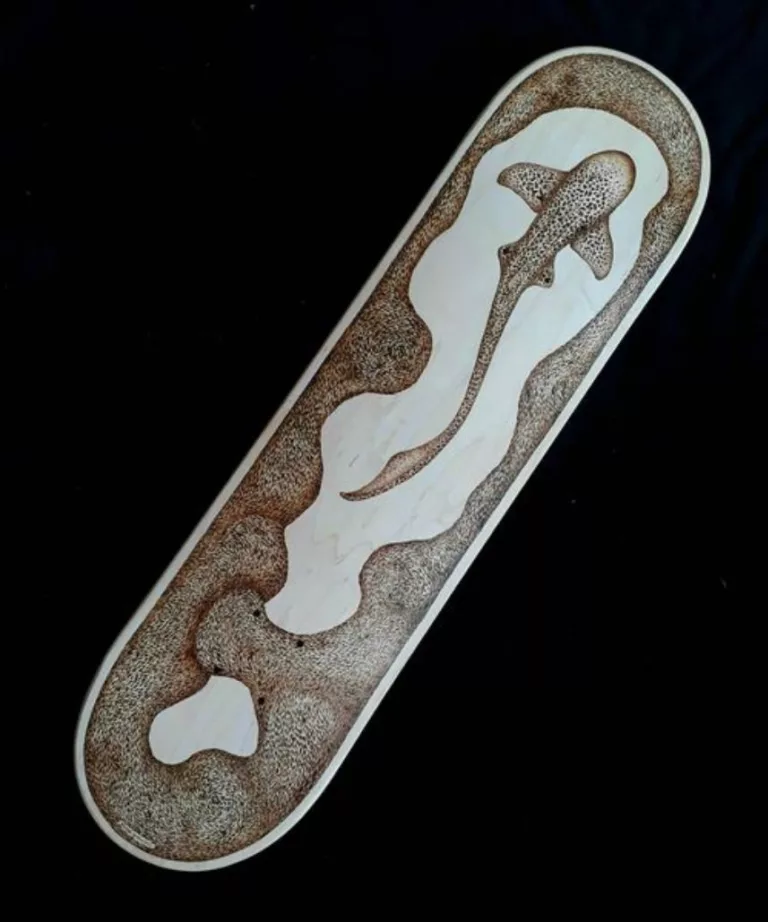Modern Pyrography Techniques – 5 Ways to Burn Wood For Any Project
The wood burning process contains 4 major burning patterns: line burning, lettering, shading, and detailing. Modern pyrography techniques, a combination of some methodical approach, are used to implement these patterns allowing any pyrographer from doing the simplest to the most complex burn projects.
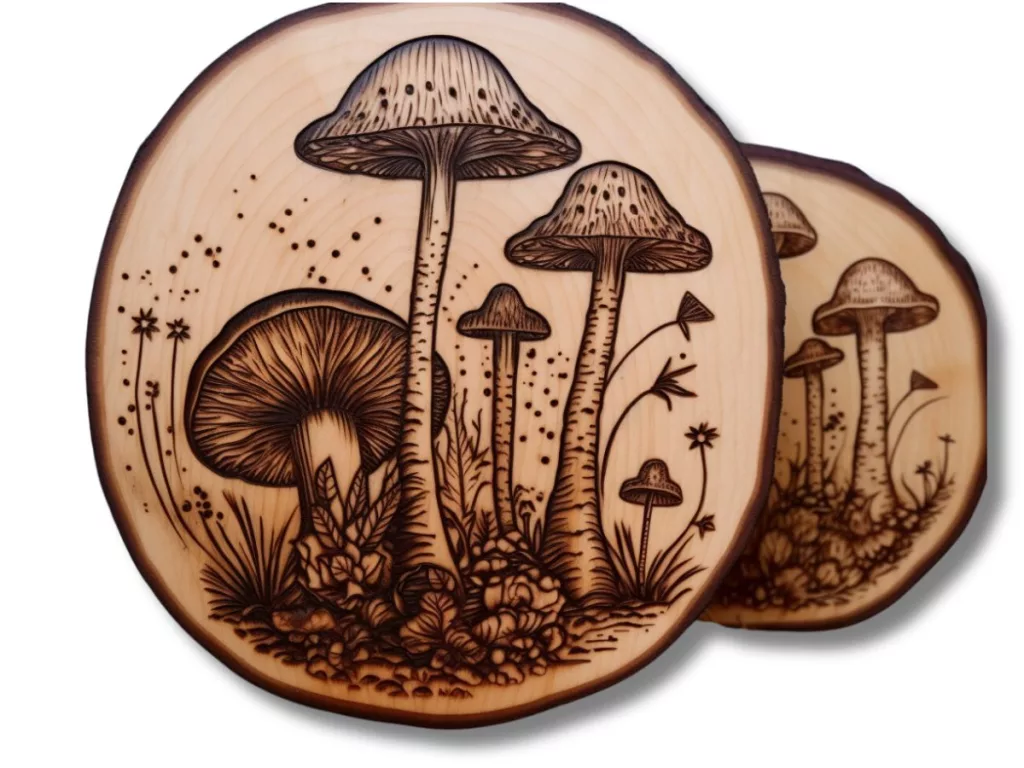
And in this article, I will introduce you to some modern techniques that can help you work on almost all pyrography projects very efficiently. So feel free to read the full article if you want to find out everything.
Modern Pyrography Techniques in Practice
You have to prepare the wood first before you put the burner pen in action. This small but powerful article tells you about wood preparation.
The Pulling Technique
- The pulling technique involves burning wood using a pulling motion.
- But instead of moving the pen in any direction, you pull it toward you.
- The pulling method can work by pulling toward yourself and also toward your elbow or any similar direction.
- If you want a darker and deeper texture, just use the same motion to burn more.
- However, it does not work perfectly if you do it in a push technique because it will make drawing a straighter line more challenging and uneven.
What It’s Good For
- Line burning
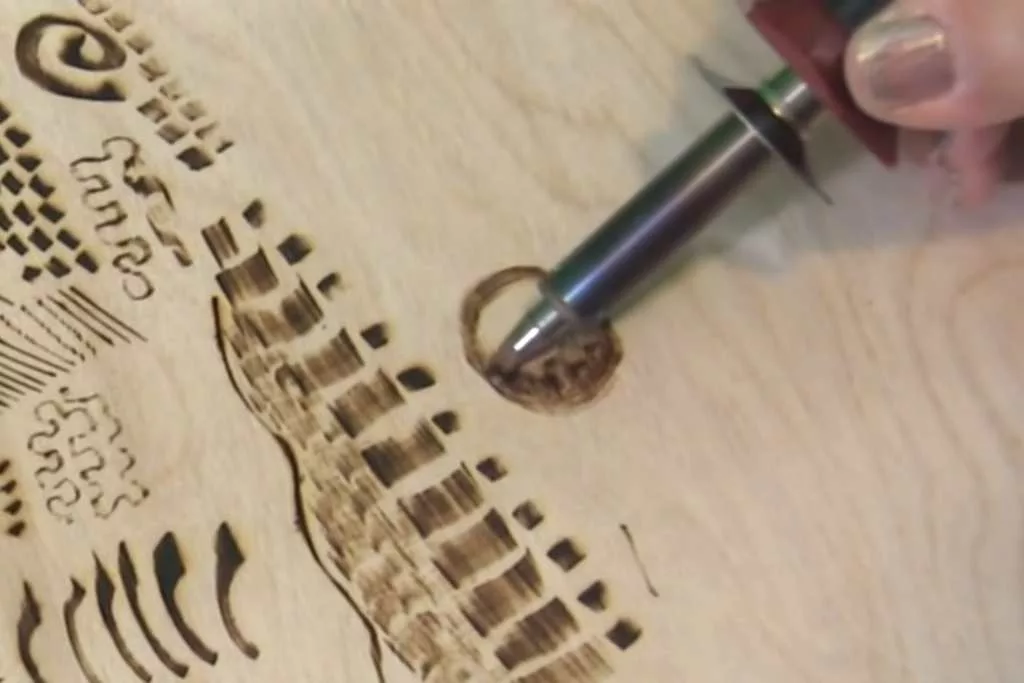
The Swinging Technique
- The swing technique refers to the way of burning wood in a swinging motion.
- Like a swing, the pen tip will move from outward to inward.
- At the endpoint, you must speed up and pull the pen before it touches the wooden piece.
- If not, it will leave a burnt dot or blob, making the swing burn uneven.
- By making longer strokes, you can also use this technique to make curvy or wave-like burning patterns.
What It’s Good For
- Line burning
The Sweep Technique
- The sweep technique works much like walking into a room and sweeping in various directions.
- While burning with this technique, you must start slowly and then pull the tip a little faster so that the end of the line looks like it has faded and does not burn wood deeper.
- That makes the sweep technique suitable for line burning and even burning other shapes.
- This process also helps draw leaf lines, grass, eyelashes, etc.
- If you want to darken the burn, you can repeat the burning technique over and over again.
What It’s Good For
- Lettering
The Touch/Dot Technique
- The touch technique is what many of us know as the dot pattern.
- Instead of pulling or swinging the pen, you burn wood by pausing for a second or so, just enough to leave a dot burn on the wood.
- Since the touch technique requires adding slight pressure on wood, it comes with the risk of overburning the design.
- So start with light dots, and gradually burn darker if necessary by pressing the tip on the wood for longer.
What It’s Good For
- Shading
The Scumbling Technique
- The scrambling technique is the method of burning wood by moving the pen tip in a circular motion.
- This technique is very useful if you want to add more texture to your wood burning projects.
- You can start fast with lighter movements and then move slowly to create darker and deeper textures.
- The scumbling technique can be a combination of pulling, sweeping, touching, or dot and swinging methods.
What It’s Good For
- Shading
- Detailing
Following is a very effective video on the stroke techniques used in pyrography.
Here is a reference video as well on the techniques.
Oh, I missed to tell some very basic things, this is a quick read about pyrography or wood burning if you are new in this area.
Final Words
Trying out modern pyrography techniques is not often as easy as it looks, especially when there is line art, faded burn, and textures involved. But the key to perfecting these techniques is to practice as much as possible and learn to keep your hand steady.

